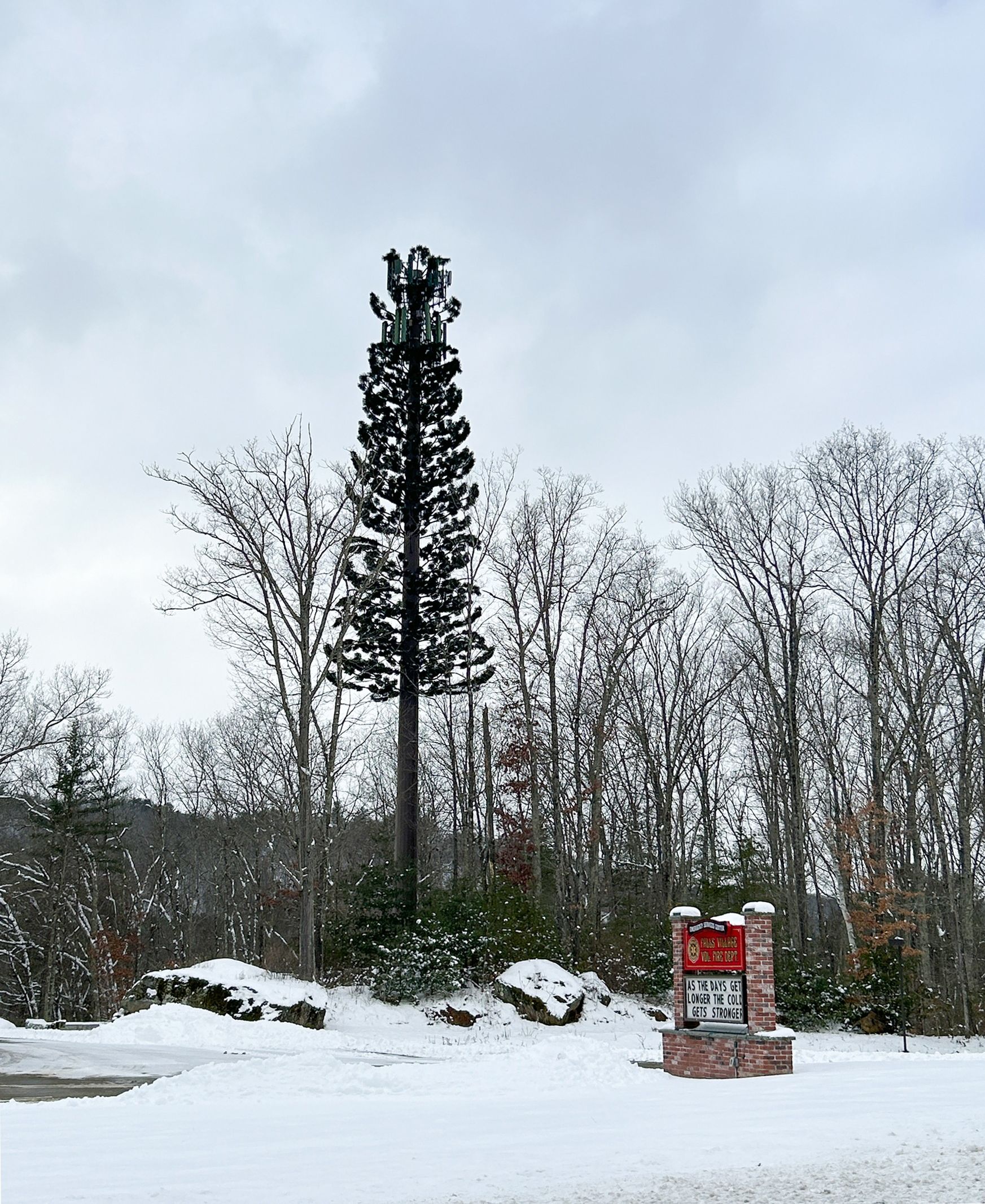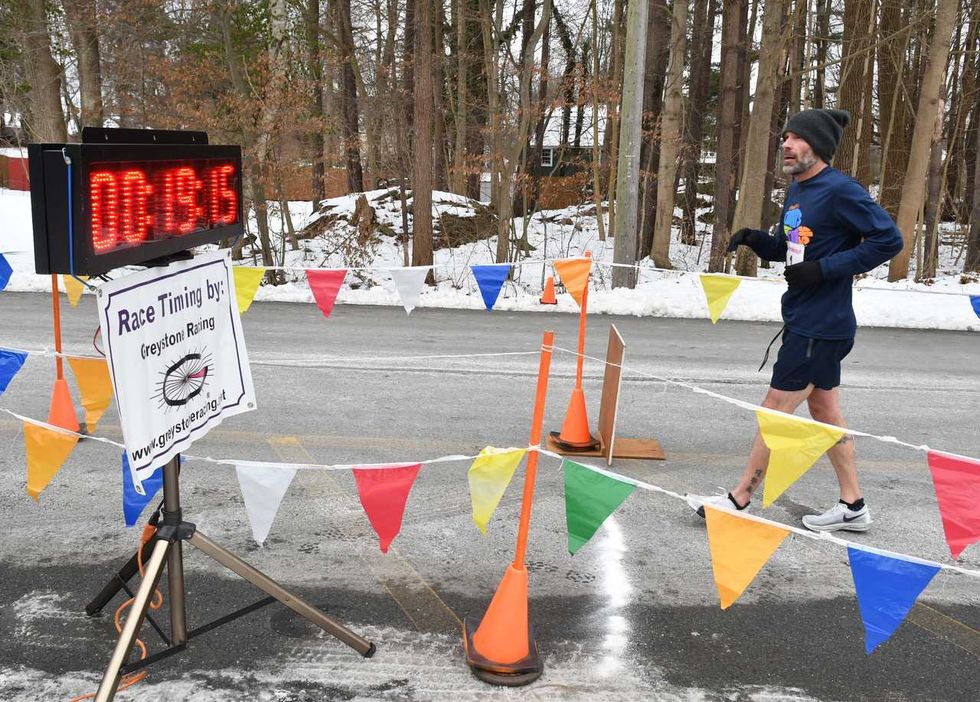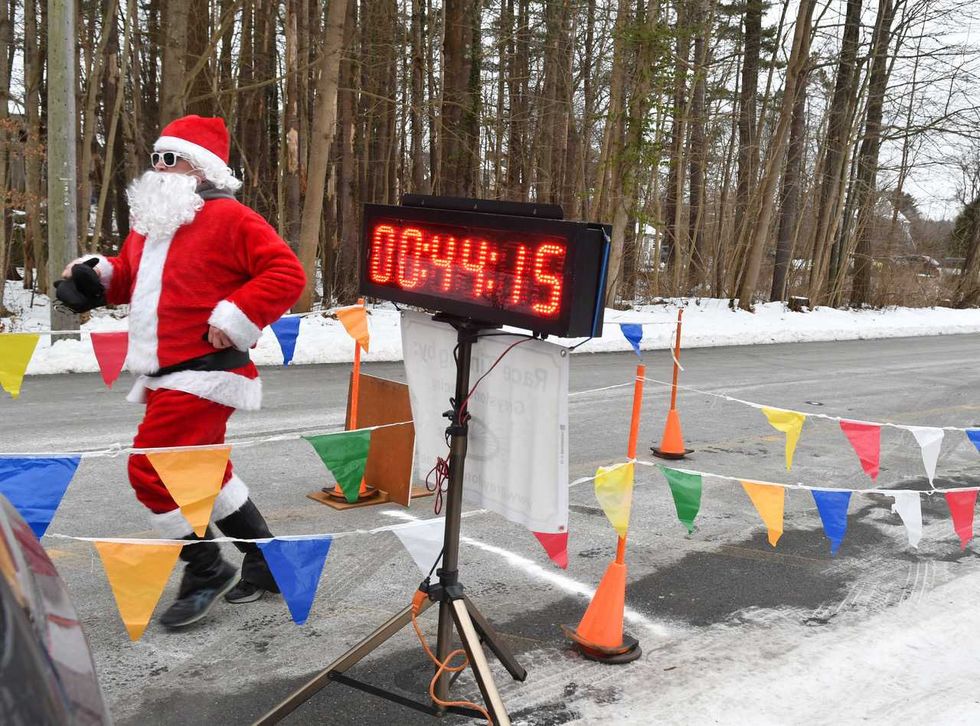Can you hear me now?

This cell tower by the Falls Village Fire Department on the side of Route 7 is disguised like a tree to better fit in among the rural, forested landscape of the Connecticut's Litchfield hills.
Caitlin Hanlon

This cell tower by the Falls Village Fire Department on the side of Route 7 is disguised like a tree to better fit in among the rural, forested landscape of the Connecticut's Litchfield hills.
Drivers and residents across Northeast Dutchess County, New York, and Connecticut’s Northwest Corner are well aware of the area’s spotty cell phone coverage.
“Cell phones suck,” Amenia Volunteer Fire Chief Chris Howard said. He echoed the feelings of many residents and visitors to the area who contend with dropped calls and failed text messages on a regular basis.
Spotty cell service is annoying for drivers relying on GPS for directions and it creates problems for Howard and his department. Howard said the truck’s computer-assisted routing uses the T-Mobile network. When trucks have to travel north of the traffic light in the middle of downtown Amenia, their cell service drops out and crews could lose those directions. Usually, Howard said, this isn’t a huge setback for his crew, but that’s not the only challenge emergency responders face because of spotty, slow service.
Hikers hitting the hills often travel through dead zones. The region’s rugged terrain — while scenic and inviting to hikers — hurts coverage. Hills block signals from distant towers, so if hikers have an accident in a remote area they may have trouble getting in touch with emergency services. Howard said Amenia’s rope crew will ask for coordinates, but sometimes the hiker can’t provide good information. “Then they’re hiking blind,” Howard said.
Cell phone tower construction is slow in rural areas across the United States, but Northeast Dutchess County and the Litchfield Hills combine a number of factors which all contribute to poor service in the region. Chief among them are the challenges presented by rugged, undeveloped land. Regions with lots of hills, few people and less power and telecommunications infrastructure are more difficult and costly to service than suburban or urban areas, according to a 2019 New York Upstate Cellular Coverage Task Force report.
John Emra, AT&T’s Atlantic region president, said cell towers require power and fiber optic connections, and many rural sites don’t already have that infrastructure. Another consideration is access. Towers can’t be too remote, otherwise emergency repairs are too difficult. However, they can’t be too close to large groups of people. Often, service roads have to be built to sites on remote ridgelines and hilltops. All this drives up the cost of cell tower construction, and the 2019 cell coverage task force report says the higher cost disincentivizes rural investment.
That report also cites local zoning codes as a potential hurdle for construction, but Emra said he doesn’t think regulations completely halt progress. In his 24 years with AT&T, he said rural communities have become increasingly open to cell tower construction and upgrades. Building codes in Northeast Dutchess County and the Litchfield Hills still present unique challenges for cell towers. Special attention is paid to ridgelines and scenic views in the area, so tall towers on high hills are discouraged through local laws. Cell towers constructed in valleys or on the sides of ridges are less effective, covering much smaller areas because of the hills blocking the signal.
“Even 10 years ago if you proposed a new site — particularly in Litchfield County, Connecticut — you would likely meet some fairly fierce community resistance,” Emra said. “I’ve seen the change where we now have communities asking us to build.” He said AT&T recently completed a cell tower near Stanfordville, New York, and there’s a site near Salisbury, Connecticut, which should be online by the end of the year. Additionally, AT&T has built cell antennas across Dutchess County called “small cell nodes,” which are installed on utility poles but provide coverage over shorter distances than a full-size tower.
Housatonic Valley Regional High School, where the price of school lunch will increase to $4.00 beginning Jan. 5.
FALLS VILLAGE -- School lunch prices will increase at select schools in Regional School District No. 1 beginning Jan. 5, 2026, following a deficit in the district’s food service account and rising food costs tied to federal meal compliance requirements.
District officials announced the changes in a letter to families dated Monday, Dec. 15, signed by Superintendent Melony Brady-Shanley and Business Manager Samuel J. Herrick
Under the new pricing, lunches at Lee H. Kellogg School and Cornwall Consolidated School will increase by 25 cents to $3.75, while lunches at Housatonic Valley Regional High School will rise by 50 cents to $4.00.
According to the district, the food service program depends on revenue from lunch sales as well as federal reimbursement. Increased food costs and compliance requirements contributed to the shortfall during the 2024–2025 fiscal year.
School lunch prices have remained unchanged since the 2019–2020 school year, prior to the COVID-19 pandemic. In the years that followed, the district used COVID-19 relief funds to allow students to receive lunches at no cost.
Families who believe they may qualify for free or reduced-price lunch may apply at any time during the school year. Applications are available online for Housatonic Valley Regional High School, Lee H. Kellogg School and Cornwall Consolidated School.
The lunch price increase applies only to these three District No. 1 schools, as Housatonic Valley Regional High School oversees the food service programs at Lee H. Kellogg School and Cornwall Consolidated School. Other schools in the district operate independent food service programs and are not affected.
Runners line up at the starting line alongside Santa before the start of the 5th Annual North Canaan Santa Chase 5K on Saturday, Dec. 13.
NORTH CANAAN — Forty-eight runners braved frigid temperatures to participate in the 5th Annual North Canaan Santa Chase 5K Road Race on Saturday, Dec. 13.
Michael Mills, 45, of Goshen, led the pack with a time of 19 minutes, 15-seconds, averaging a 6:12-per-mile pace. Mills won the race for the third time and said he stays in shape by running with his daughter, a freshman at Lakeview High School in Litchfield.

Don Green, 64, of Red Hook, New York, was second among male runners with a time of 21:17 and a 6:52-per-mile pace. Becky Wilkinson, 47, of Southfield, Massachusetts, was the first woman to cross the finish line with a time of 22:16, averaging a 7:11-per-mile pace. Wilkinson finished fourth overall.
Margaret Banker, 52, of Lakeville, finished second among women runners with a time of 23:59 and a 7:44-per-mile pace.
Runners came from all over Connecticut, Massachusetts and New York. One runner listed home as London, England. Many were members of the Run 169 Towns Society, a group that is dedicated to completing races in every one of Connecticut’s 169 towns. Elizabeth Smith, 32, of Manchester, a member of Run 169, said this was her 162nd town.
“I started 10 years ago,” Smith said. Her husband, Daniel, 33, has run races in 73 Connecticut towns, now including North Canaan. He was eager to know where to get a good cup of coffee after the race.
Santa, who got a head start on the group of runners but finished next to last with a time of 44:14, has been a feature in the North Canaan race since it started five years ago.
The 5K proceeds from a start in front of the North Canaan Elementary School on Pease Street to course around the Town Hall parking lot, up West Main Street past the transfer station to the state line and back. Cheryl Ambrosi, 45, of Danbury, was the last to cross the finish line with her dog Benji. “It was so much fun,” she said as she ended, even though she didn’t catch Santa.

The Torrington Transfer Station, where the Northwest Resource Recovery Authority plans to expand operations using a $350,000 state grant.
TORRINGTON — The Northwest Resource Recovery Authority, a public entity formed this year to preserve municipal control over trash and recycling services in northwest Connecticut, has been awarded $350,000 in grant funds to develop and expand its operations.
The funding comes from the Department of Energy and Environmental Protection via its Sustainable Materials Management grant program. It is intended to help the NRRA establish operations at the Torrington Transfer Station as well as support regional education, transportation, hauler registration and partnerships with other authorities.
Founded by the City of Torrington in May 2025, the NRRA was established to oversee regional municipal solid waste management. Its creation followed a $3.25 million offer by USA Waste & Recycling to purchase the Torrington Transfer Station — a sale that would have privatized trash services in the region.
The proposed sale was initially approved by the MIRA Dissolution Authority, the entity responsible for dissolving the state’s former Materials Innovation and Recycling Authority, which owned the Transfer Station at the time. Before the transaction could close, the state intervened and directed that the facility’s operating permit be assigned to the NRRA to preserve a publicly controlled alternative.
MIRA has since dissolved, and the Transfer Station is currently operated by the state Department of Administrative Services. Many towns in northwest Connecticut have expressed interest in joining the NRRA. As of December, Torrington and Goshen were the only two municipalities in the authority.
At the Dec. 11 meeting of the Northwest Hills Council of Governments (COG) — a regional planning body representing 21 municipalities in northwest Connecticut — Director of Community and Economic Development Rista Malanca encouraged more towns to sign on.
“We need towns to join the Northwest Resource Recovery Authority to show your support, show this is what you want to do,” Malanca said.
Salisbury First Selectman Curtis Rand said his municipality is planning a town meeting in January to vote on a resolution to join the NRRA. Cornwall’s Board of Selectmen recently discussed scheduling a town meeting in the winter for the same purpose. Sharon, Falls Village and North Canaan have also expressed continued interest in pursuing a public option.
Kent is the northernmost member of the Housatonic Resource Recovery Authority, a regional solid waste authority representing 14 municipalities stretching south to Ridgefield. COG towns expressed interest in joining HRRA in 2024, but they were denied and set out to develop the NRRA.
“We also have been having conversations with the Capital Region Council of Governments and the Naugatuck Valley Council of Governments to think about how we can use existing resources, maybe some of these grant funds, to bring in shared resources or shared staffing that will help with some of the recycling coordinating efforts,” Malanca said.
With grant funds secured, NRRA aims to grow to a point that it can take over operations at Torrington Transfer Station to serve as a regional hauling hub. What happens to the trash after that has yet to be determined. Currently, it is being shipped to a landfill out of state. The existing municipal refuse hauling contracts that were established with the state expire in 2027.
The Salisbury Winter Sports Association (SWSA) will host its annual Junior Jump Camp, a two-day introduction to ski jumping, on Saturday and Sunday, Dec. 27 and 28, from 9 a.m. to 2 p.m. at Satre Hill in Salisbury.
The camp is open to children ages 7 and up and focuses on teaching the basics of ski jumping, with an emphasis on safety, balance and control, using SWSA’s smallest hill. No prior experience is required.
The cost is $50 per child and includes instruction and lunch on both days. For more information or to register, visit www.skireg.com/swsa-camp or email info@jumpfest.org